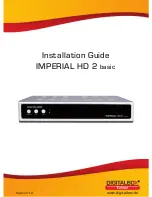
IC-746 FAQ
The Inrad 306 is listed on their WWW site, and is electrically compatible, but might not fit in
the available socket.
The Icom crystal filters with an "A" suffix (FL-44A, FL-52A, FL-53A) all have 6mm lower
case heights than the equivalent filters without the "A". Icom calls them "low profile". They
are electrically identical to the taller filters. Nobody knows if there is enough clearance to
install one of the larger filters into an IC-746.
There are apparently TWO slightly different FL-44A filters. The earlier model has a slightly
wider bandwidth and steeper skirts than the later model. No word yet on how to tell them
apart.
While not an optional filter, W2ENY has a kit to modify the IC-746 by replacing either the
stock 9Khz or 15Khz wide internal filters with a 6Khz wide filter. See the "mod" question of
the FAQ for more details.
4.3
Which optional IF filters should I buy?
Better to ask, "Why would I even need filters?".
Quite possibly, you'll won't need any optional filters. Use the Twin PassBand Tuning (TPBT)
to dynamically adjust your IF bandwidth first. Properly used, TPBT can give you nearly any
bandwidth you want. You may decide that you don't need any anything else.
There are over a thousand possible combinations of optional filters (1,539 at the last count).
Most of them will make sense (i.e. be useful) to someone, somewhere. As it is a matter of
style and situation, ultimately, the choice will be up to you.
We've broken up this issue into several questions, each targeting a more specific issue or
problem. Short of writing a book, it is the only hope of providing any useful answers.
At the end of this section, we've listed some popular combinations. Don't use a filter
combination just because it's popular. Optional filters could total $500 or more. Understand
what and WHY you're buying to make sure you get your money's worth.
4.4
What is an IF filter's "bandwidth"?
4.5
What is an IF filter's "shape factor"?
Also called "passband", a filter's bandwidth is a measure of how wide a signal will pass thru
the filter. For IF filters, this is typically measured as the span between the filter's -6db points.
(Some folks measure bandwidth at the -3db points. Pay careful attention to the specifications
when comparing filters)
"Shape factor" tries to represent steepness of the filter's attenuation curve. Typically defined
as the ratio of the -60db passband to the -6db passband (bandwidth). The perfect shape
factor of 1.0 is unobtainable. Shape factors of 2.0 or less are considered excellent.
This is one of those situations where a picture is worth a thousand words. A good look at the
spectral response curve of a typical filter will make these terms clearer.
Page 52 of 113
2003-02-08
Содержание IC-746
Страница 36: ...IC 746 FAQ Page 36 of 113 2003 02 08 ...
















































